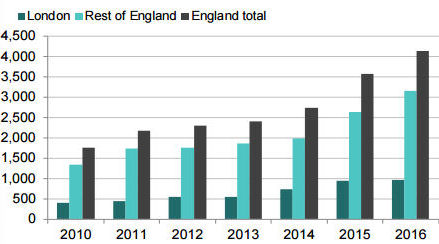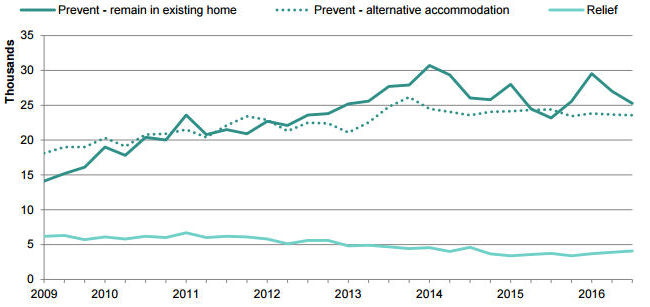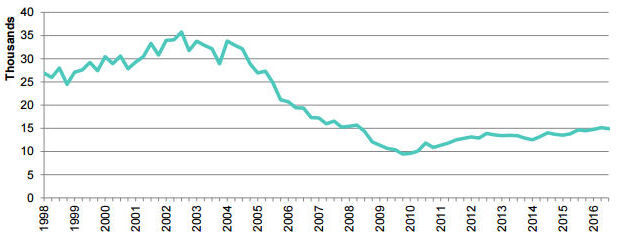Have you wondered how many of the people who’ve been helped off the streets since the start of lockdown, now have somewhere permanent to live? At OSR, we think it is important this information is published and accessible, and we are working with statistics producers across the UK to encourage the development of new and improved data and statistics in this important area.
The pandemic is placing an urgent focus on the experiences and needs of rough sleepers, and the broader homeless. This is due to the increased risks that they face from being unable to isolate themselves safely, and because many of them already experience poor health.
The terms ‘homeless’ and ‘rough sleeper’ are used interchangeably in public debate. People sleeping rough are the most visible form of homelessness, but there are other large, less visible groups of individuals without somewhere permanent to live and many others who are vulnerable to becoming either homeless or to sleeping rough, at any given time.
Unprecedented actions by governments and charities across the UK to provide emergency accommodation to rough sleepers or homeless people at risk of rough sleeping, are creating important new questions, such as:
- how many individuals have now found more permanent accommodation?
- how many people have already, or may in future, return to sleeping rough or become homeless?
Can these questions be fully answered?
Official UK statistics on rough sleeping, and homelessness more broadly, whilst developing in different ways in England, Wales, Scotland and Northern Ireland due to different approaches to homelessness policy and criteria for state support, have all been subject to recent innovations.
Recent developments which have enhanced the overall public value of the available official statistics by closing gaps in the evidence base include:
- new experimental statistics on homelessness in Northern Ireland; Homeless deaths in England, Wales and Scotland, and homeless deaths due to COVID-19 in England and Wales
- new interactive tools to help users to make informed decisions about how to use the available UK homelessness and rough sleeping (and housing) data
- funded projects to link government homelessness data in England with other administrative data to improve understanding about those people most at risk of becoming homeless or rough sleeping
- new cohort analyses of rough sleepers’ journeys through the statutory homelessness system in England
- plans to publish new evidence in England about the homeless history, experiences, characteristics and use of services for people sleeping rough or at risk of sleeping rough
- data linkage research exploring the relationship between health and homelessness in Scotland, and
- consideration of new street homelessness statistics in Scotland.
These developments are helping to ensure that official government figures better reflect the range of lived experiences of people who are homeless in the UK. But robust statistical evidence needed to answer key questions about the experiences of UK rough sleepers since the start of the pandemic is still lacking.
New management information on the numbers of rough sleepers, and those at risk of rough sleeping, who have been provided with emergency accommodation since the start of lockdown is now being collected by UK councils. However, this management information is not always recorded consistently, and in many cases remains unpublished.
We expect new emerging data in this area to be made publicly available when used in official public statements, and welcome the efforts of the statisticians involved in making this happen in England and Wales, where some data has been published on the numbers of rough sleepers or those at risk of rough sleeping who have been provided with emergency accommodation. The latest data for England also includes information on the number of people provided with settled, hostel or supported accommodation or since the pandemic began. Notwithstanding this progress, there is a clear and urgent need for more comprehensive, timely and accessible UK official statistics about the circumstances of the homeless and rough sleepers since the start of the pandemic. Without such evidence, these and other important questions about the experiences of these vulnerable people will remain unanswered.
We are therefore encouraged to see that UK statisticians and analysts are working together to look at ways to bring together rough sleeping statistics from across the landscape, and provide clarity on the comparability of these statistics across the UK. We hope they continue to work together to innovate and develop new statistics, to ensure that the current and future circumstances of some of the most vulnerable people in society during the pandemic, are better understood.
Developing a fuller picture
The true public value of homelessness and rough sleeping statistics lies in bringing together the separate official measures of homelessness and rough sleeping, with other robust and insightful evidence, to develop a richer, better integrated and coherent statistical picture of homelessness and rough sleeping in the UK. This includes drawing on newer case-level and longitudinal approaches, management information, and other research, to better understand how people move in and out of homelessness and rough sleeping over time, and to more fully convey the dynamics and complexity of the UK homelessness and rough sleeping picture.
We trust that senior leaders will support government statisticians in their efforts to achieve this, and provide the resources they need to share new methods, new data, and expertise for innovation and enhanced insights, while maintaining existing official statistics production.
Only with a fuller picture, drawing on a range of robust sources of statistics and further evidence, will government statistics be able to fully represent the lived experiences of homeless people in the UK. And only then will governments, charities and other key decision makers be able to truly support them to find ways out of the extremely difficult circumstances that they face.



